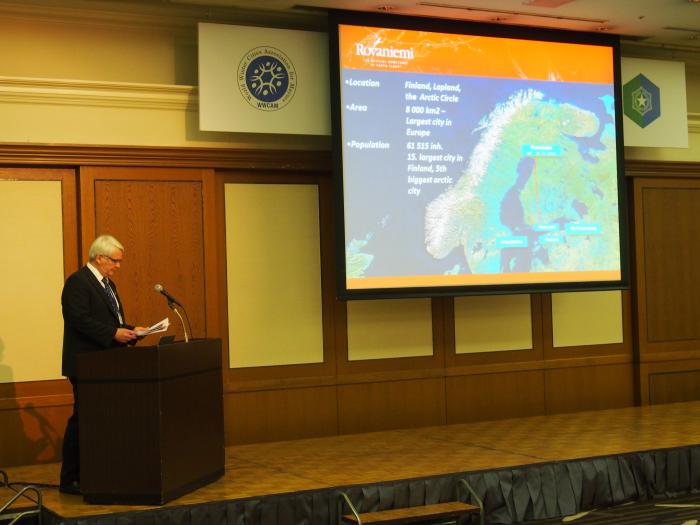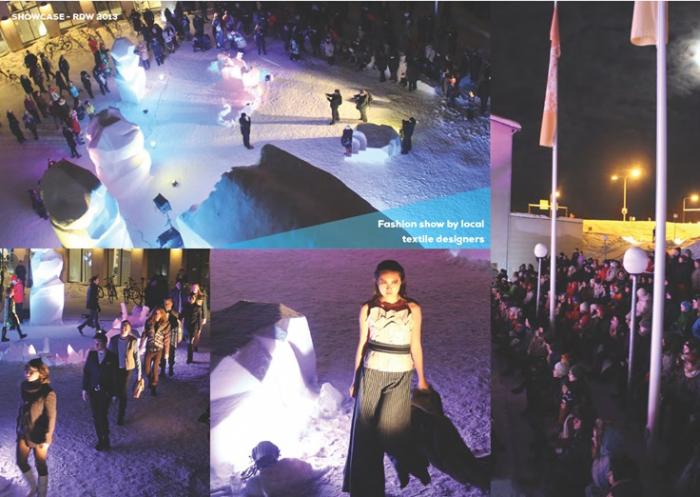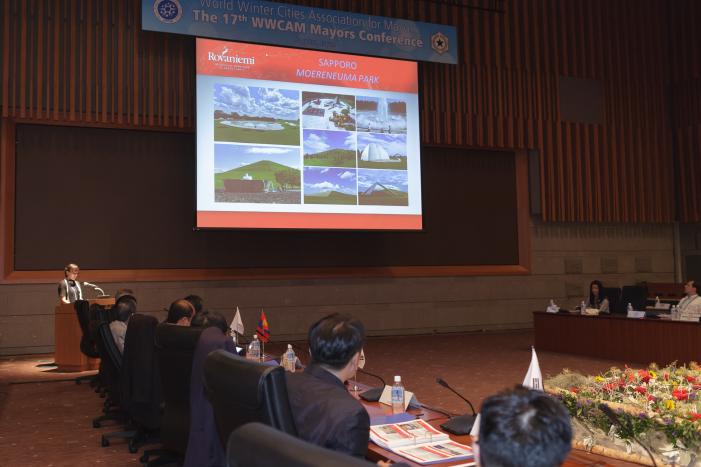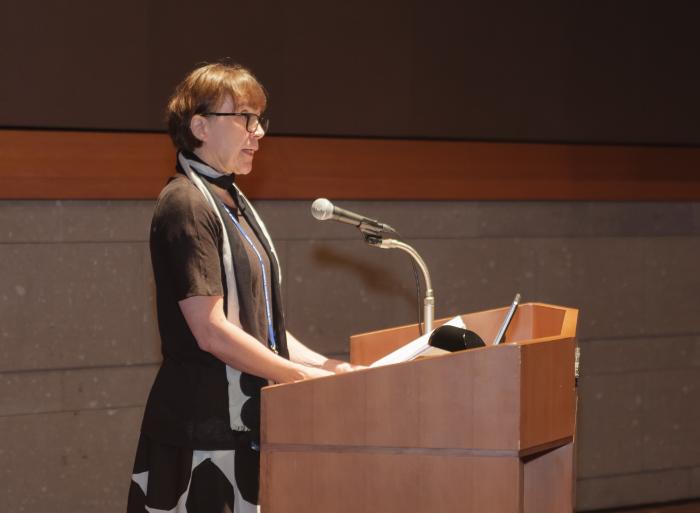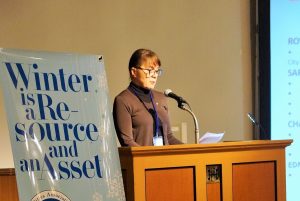Arctic Design Subcommittee
The Arctic Design Subcommittee was established in February 2015 to solve problems and create new opportunities through design. Its approach is to define and quantify problems, plan and test solutions, and then apply them in the future. The Secretariat of the Subcommittee is located in the city of Rovaniemi, Finland, and the participant cities are Changchun, Edmonton, Harbin, Hwacheon-gun, Novosibirsk, Rovaniemi, and Sapporo. (Completed in November 2021)
First meeting (July 29, 2016)
Second meeting (January 25, 2018)
Third meeting (September 13, 2018)
Fourth meeting (November 15, 2019)
Activity Plan
Rovaniemi gave a presentation on the action plan of the newly established Arctic Design Subcommittee at the 2015 WLOM. The main outline of this presentation is as follows:
・Rovaniemi is the 5th largest city in the Arctic Circle. The city has snow about 6 to 7 months a year and does not see very much the sun in December and January, but on the other hand the summer the sun does not set down from the beginning of June to the beginning of July.
・In general it is said that Design is not just what something looks like or feels like, rather Design is how something works. This concept of “How it works” becomes even more import within the framework of Arctic Design.
・Methods of planning winter cities and running business in winter cities were presented as the most important examples of Arctic Design.
・The planned construction of an activity area for summer and winter use along Kemi River in the very city center was showcased as one of example of city planning in Rovaniemi. The Winter Swimming World Championships took place in this river in the winter of 2014. Another example is the Sports Arena, also located in the city center, which can be used both in summer and winter. During summer time it is mostly used for football and in the winter time it is used for skiing, skating and other winter activities. Furthermore, bicycle paths are well maintained in Rovaniemi and cleared of snow like the roads and streets during the winter time. The city has roughly 1000 km of snowmobile routes.
・Tourism companies are using more and more design when they develop their business. The most important elements of the Rovaniemi tourism business are Christmas time and Santa Claus. The image and stories of Santa Claus are a part of the design process. Snow and ice are also important in the tourism business. Arctic design is used in shaping buildings and interiors for structures such as ice hotels and ice bars.
・In February, “Arctic Design Week” is held in Rovaniemi. Wooden houses made in Rovaniemi are the combination of the traditional and modern design trends of Lapland and are very interesting. Reindeer are of greatest importance in Sami culture and reindeer material products are the main export items of Rovaniemi. Furthermore, testing products in winter conditions such as vehicles is one of the important business models in the city. Nature in Lapland is very attractive as a filming location and local companies provide various services to production teams.
・The aim of the Arctic Design Subcommittee is to use Arctic Design to solve problems using the know-how and experience of WWCAM member cities. Rovaniemi will send member cities a survey and make a summary of the responses. After that, each member city will select the problems which it would like to solve or opportunities it would like to develop, and subcommittee activities will be conducted via virtual workshops until the next face-to face meeting.
Presentation English
First Meeting
The subcommittee conducted a survey in advance of of the conference to collect examples of member cities’ approaches to problem-solving through arctic design. The subcommittee secretariat Ms. Tarja Outila, a city architect from Rovaniemi, reported the results of the questionnaire survey.
Theme I: Urban design
・ Changchun has invested RMB 2 billion into the construction and maintenance of the city’s parks and gardens since 2014. At present, Changchun has 108 parks and gardens open to the public, and they have become popular leisure areas for citizens. The investment has helped the city improve its image.
・ The Victoria Park Pavilion in Edmonton serves as a space for outdoor activities and is used by community and sport groups. Edmonton’s Winter Design Guidelines, which have not yet been officially approved, are applied to public facilities such as streets, parks and other infrastructure to block wind and enliven the cityscape by using color and design.
・ Seondeung Street in Hwacheon-gun is illuminated with LED lights during the Hwacheon Sancheoneo Ice Festival.
・ Bugrinsky Bridge (in Novosibirsk) has a unique design with an arch span of 380 meters and resembles a gigantic red bow. In 2011, a kindergarten in Novosibirsk won the Best Russian Kindergarten Prize at the FIABCI Global Competition. In 2015, the Novosibirsk Astrophysical Center was recognized as the Best Implemented Construction Project for a Social Asset in Russia at the First City Planning Contest organized by the Russian Ministry of Construction. The Zarya Indoor Football Arena is Siberia’s largest indoor football complex. For outdoors games in summer, the complex has five artificial-turf football pitches.
・ Moerenuma Park in Sapporo was designed based on the Circular Greenbelt Concept, which aims to encompass Sapporo’s urban district with parks and green zones. During the winter, visitors can enjoy cross country skiing, sledding or skiing down Mt. Moere, making the park a place to take part in winter sports.
・ A multipurpose sports field in Roveniemi, which is used as an ice rink, skiing tracks and a festival venue in the winter, and a football field and festival venue in the summer, was voted the Architizer A+ Popular Choice Winner in 2016. Lappset is a corporation based in Roveniemi. It produces playground facilities and play equipment designed with fun in mind using playful colors. The city of Rovaniemi has adopted the principle of urban zoning in local master planning. The aim is to make the city more ecological and viable for the increasing number of residents in the downtown area. A research project is also being conducted to help evaluate the planning process.
Theme II: Design and expertise in winter conditions
・ Edmonton opened a new winter recreation destination last year – the Freezeway, a 400-m skating trail nestled among trees in Victoria Park. Connected to the skating oval, the trail was illuminated by light installations designed by an artist, creating a magical atmosphere.
・ Hwacheon is expected to reduce air pollution and energy consumption during the winter season by using sustainable energy systems rather than fossil fuels.
・ Rovaniemi has employed road scanners equipped with hardware and software to obtain complete images of road infrastructure. Arctic Driving Center Ltd. provides technical assistance for local car and tire makers. The Arctic Center, as a national and international hub of information, conducts research mainly around three themes. It is a northern institute for environmental and minority laws and is also a sustainable development research group.
Theme III: Design in everyday life and tourism
・ Changchun is planning to encourage local citizens to participate in sports and exercise. Changchun hosts the Vasaloppet International Cross Country Skiing Festival. The festival is designed by the local government so that the festival will have an impact on everyday life and tourism in this winter city.
・ The Edmonton Ice Castle is made entirely of ice and snow. Visitors can walk through and explore the castle and its magical winter atmosphere.
・ In Hwacheon, a cooperative system to sell local products during the festivals was established. In Novosibirsk, the Flamingo Sports Complex hosts various sporting events for city residents, and Warm Winter Tours are conducted.
・Each year in February, Arctic Design Week is held in Rovaniemi, bringing together international design experts, Nordic designers, firms and students, as well as design enthusiasts. You can stay overnight at the Arctic Snow Hotel, which is made entirely of snow and ice.
Theme IV: Problems to be solved
・ Changchun’s problems and challenges include a growing population, the proper treatment of waste, the smart use of energy and resources, and traffic congestion.
・ Edmonton’s challenges are deepening the robust knowledge of what it means to design for a winter context and applying this knowledge properly. The city focuses on enhancing the vibrancy of its streets in winter.
・ As a measure to relieve congestion and smoothly guide visitors to the downtown area during the festival, Hwacheon proposed the creation of a heart-shaped tunnel between the festival area and the downtown area.
・ Sapporo has two challenges: Boosting urban appeal and vibrancy, and a need for appropriate maintenance and conservation to meet the needs of shifting demographics and age distributions.
Presentation English
Second Meeting
The City of Rovaniemi, the Arctic Design Subcommittee Secretariat, presented the results of a questionnaire they compiled in the winter of 2017. Tarja Outila presented their findings including challenges/problems that affect urban design and challenges/problems relating to winter conditions that restrict innovation, after which a round table discussion was held member cities which participated in the subcommittee, including Sapporo, Changchun, and Edmonton.
Presentation English
Third meeting
The city of Rovaniemi, secretariat of the Subcommittee, announced that all activities of the subcommittee were temporarily paused until the successor of Tarija Outila -who had been in charge of the subcommittee for many years and retired from her position at the city hall and changed employment to the University of Oulu in order to further deepen her research for the subcommittee – was appointed.
As the course of further development, the subcommittee announced it will include not just local municipalities but also universities, institutions of higher education, research facilities and the private sector in continuing to carry out activities.
Fourth Meeting
Mr. Juha Tuisk, an advoisor to the city of Rovaniemi, reviewed the past subcommitee meetings and talked about future activities.
・ Rovaniemi set up a subcommittee to be more active in WWCAM activities, and started by taking a survey to grasp each city’s policies and issues. It was even more favorable if there had been an opportunity for all interest cities to get together and discuss how to proceed the subcommittee in the beginning. The city hopes that its experience can contribute to improve future subcommittee activities.
・ The subcommittee’s main objectives are to exchange information as well as to promote cooperation, and is seeking the best way to achieve these goals. For example, establishing an online platform may be able to make information exchange easier. The platform can also be utilized in the Rovaniemi Mayors Conference.
・ What happens after the final year – Is there going to be a new subcommittee established, or does the current subcommittee continue to be active?
Remarks by member cities and WWCAM Secretariat:
・ We need to build a platform where we can interact with questions and suggestions. It is ideal to establish an online platform that is accessible anytime not only by subcommittee members but also all member cities.
・ Add-ons are relatively easy on the system that we use for newly developed WWCAM homepage, therefore, it should be technically possible to add such functions. Some restrictions may be required on access rights, such as the member cities participating to a survey will have authority to request the experts or neighboring municipalities to fill out the questionnaire. Also, based on what was pointed out by Rovaniemi, the Secretariat is going to consider setting up the guidance at the initial stage to revitalize the activities of subcommittee, and call for opinions from the member cities.
Presentation English

